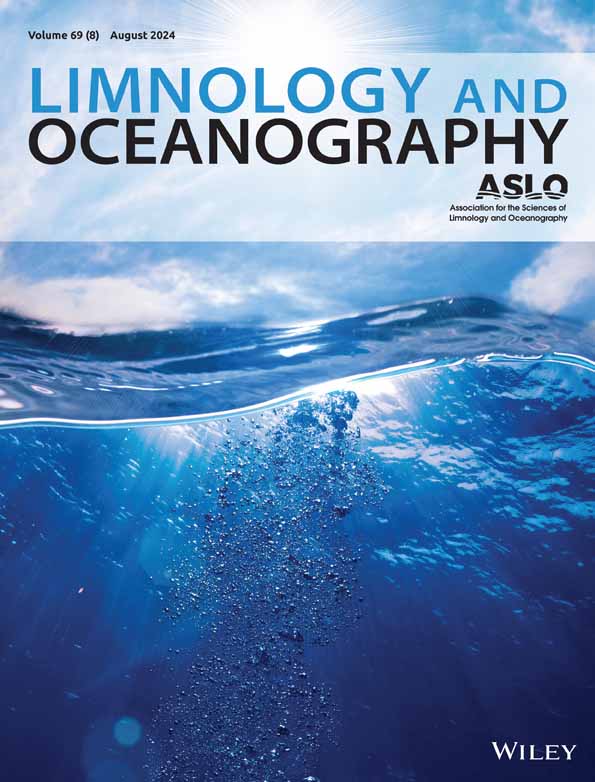Nutrient enrichment—but not warming—increases nitrous oxide emissions from shallow lake mesocosms
IF 3.8
1区 地球科学
Q1 LIMNOLOGY
引用次数: 0
Abstract
Shallow lakes and ponds play a crucial role in the processing of carbon and other nutrients. However, many lakes and ponds worldwide are affected by climate change and nutrient pollution. How these pressures affect the emission of the greenhouse gas nitrous oxide (N养分富集--而非变暖--增加了浅湖中观模型的氧化亚氮排放量
浅水湖泊和池塘在碳和其他营养物质的处理过程中发挥着至关重要的作用。然而,全球许多湖泊和池塘都受到气候变化和营养物污染的影响。这些压力如何影响温室气体一氧化二氮(N2O)的排放尚不清楚。预计气候变暖和富营养化会增加湖泊和池塘中一氧化二氮的产生和排放,但生态结构和功能的变化可能会使这些看似简单的关系变得复杂。在这项研究中,我们使用了世界上运行时间最长的基于中观宇宙的淡水气候变化实验,以厘清营养富集和气候变暖对一氧化二氮排放的影响。我们收集了大量有关一氧化二氮浓度和辅助变量的数据集,包括 2011 年至 2020 年间的三次采样活动和总共 687 次中观宇宙测量。我们的研究结果表明,养分富集会增加一氧化二氮的排放,而气候变暖(+2.5-4.0°C 和 +3.75-6.0°C)没有明显影响。我们的研究表明,减少氮涌入湖泊和池塘是最大限度减少一氧化二氮排放的最有效策略,虽然气候变暖可能会影响一氧化二氮的排放,但它似乎不是直接的驱动因素。这些发现强调了优先开展氮减排工作以遏制浅水湖泊和池塘的一氧化二氮排放的重要性。
本文章由计算机程序翻译,如有差异,请以英文原文为准。
求助全文
约1分钟内获得全文
求助全文
来源期刊

Limnology and Oceanography
地学-海洋学
CiteScore
8.80
自引率
6.70%
发文量
254
审稿时长
3 months
期刊介绍:
Limnology and Oceanography (L&O; print ISSN 0024-3590, online ISSN 1939-5590) publishes original articles, including scholarly reviews, about all aspects of limnology and oceanography. The journal''s unifying theme is the understanding of aquatic systems. Submissions are judged on the originality of their data, interpretations, and ideas, and on the degree to which they can be generalized beyond the particular aquatic system examined. Laboratory and modeling studies must demonstrate relevance to field environments; typically this means that they are bolstered by substantial "real-world" data. Few purely theoretical or purely empirical papers are accepted for review.
 求助内容:
求助内容: 应助结果提醒方式:
应助结果提醒方式:


